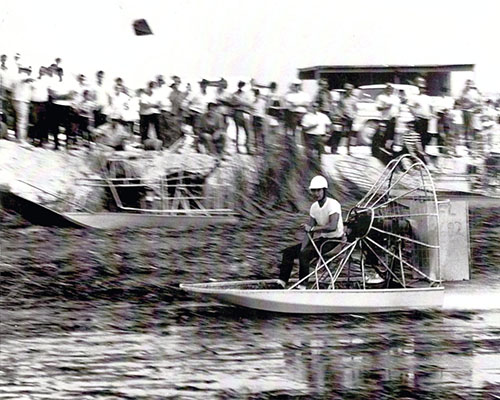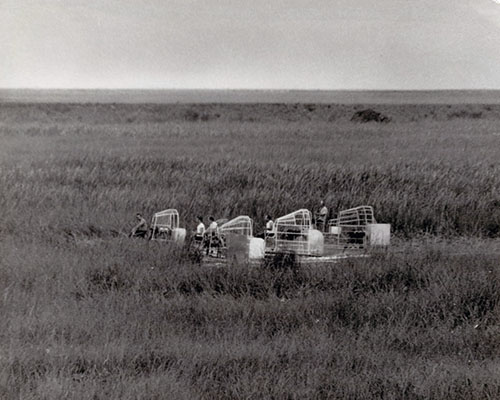
Great tarpon fishing in Florida Bay has been one of the benefits of the emergency flowage easement to reduce high water levels in Everglades water conservation areas. (Richard Stanczyk / Courtesy)
Here’s a story that all anglers can celebrate this Earth Day:
The benefits of the emergency measure that took effect Feb. 15 to allow excess water in the Everglades water conservation areas to flow south under Tamiami Trail into Everglades National Park and Florida Bay have exceeded expectations.
In addition, at the request of Gov. Rick Scott and the South Florida Water Management District, on Monday the U.S. Army Corps of Engineers approved the temporary release of water, until July 15, from the WCAs into Big Cypress National Preserve. That is now undergoing a 30-day review and public comment period.
Getting water out of the WCAs means more needed fresh water for the park and the bay, less stress on animal and plant life in the conservation areas, reduced amounts of water that need to be released from Lake Okeechobee into the St. Lucie and Caloosahatchee rivers and better fishing in all those affected areas.
“This is coming not only from me, but from talking to guides who’ve been down there 20- and 30-plus years: There are huge amounts of tarpon in Everglades National Park,” said Capt. Jason Sullivan, who does most of his guiding out of Flamingo. “Nobody knows exactly why, but the only difference this year is there’s fresh water in the park.”
Sullivan added that the quality of that water exceeds the federal standard of no more than 10 parts per billion of phosphorus. A news release from the water management district stated that the water going into the park over the past several months has averaged nutrient levels of only 5 to 8 parts per billion.
The Florida Fish and Wildlife Conservation Commission has asked the Corps to extend the emergency flowage easement so even more water can be removed from the conservation areas, which extend from the Broward-Palm Beach county line to Tamiami Trail.
“It’s a tremendous success story, but it’s critical that this deviation extension is approved,” said FWC commissioner Ron Bergeron. “It benefits the whole system.”
James Erskine, the FWC’s newly appointed Everglades Coordinator, noted that the flowage easement has significantly lowered the water level in the WCAs: In a little over 60 days, the level in WCA 3 has dropped about 18 inches, from 11.5 feet to nearly 10 feet.
“That’s the difference between survival and mortality,” said Erskine, who has 16 years of water management experience with the Miccosukee Tribe of Indians, during which time he served on the South Florida Ecosystem Restoration Task Force.
But Bergeron said water levels are still above the 25-year average heading into the rainy season of between 9 and 9.5 feet. He added that the forecast is for an exceptionally wet spring and summer, which could get the water level back up to dangerously high levels if the southerly flow is stopped.
“We are not out of the emergency until we get to the 25-year average,” said Bergeron, of Weston, who worked closely with Scott, state and federal agencies and seven private landowners who were affected by the easement to get the water flowing under Tamiami Trail.
“Obviously, the more water you get out at the bottom, where it’s needed, the less water you need to let out elsewhere. You don’t open it up at the bottom, the bathtub’s going to overflow.”
The emergency flowage easement was needed because of South Florida’s record rainfalls in December and January.
Water levels that were nearly two feet higher than the historical average for the time of year, according to the FWC, forced wildlife such as white-tailed deer to congregate on the few tree islands that weren’t underwater, which can lead to disease and starvation.
In addition, apple snails don’t breed successfully when the water is high. That meant less food for Everglades snail kites, who also had fewer places to nest. The water depth also limited the places where wading birds could forage for fish.
As the water levels continue to fall, Capt. Alan Zaremba, who specializes in fishing urban canals for peacock bass, said that will improve fishing for largemouth bass in Everglades canals.
“It’s good for everybody,” Zaremba said. “That should help get the fishing at [fusion_builder_container hundred_percent=”yes” overflow=”visible”][fusion_builder_row][fusion_builder_column type=”1_1″ background_position=”left top” background_color=”” border_size=”” border_color=”” border_style=”solid” spacing=”yes” background_image=”” background_repeat=”no-repeat” padding=”” margin_top=”0px” margin_bottom=”0px” class=”” id=”” animation_type=”” animation_speed=”0.3″ animation_direction=”left” hide_on_mobile=”no” center_content=”no” min_height=”none”][Everglades] Holiday Park going. It takes the pressure off the city canals, which helps a lot.”
Both Erskine and Bergeron noted that the ongoing southerly flow is how the Everglades used to work before it was compartmentalized by man, and it’s what the restoration of the River of Grass is all about.
Because of the emergency, it’s happening three years ahead of schedule and it’s working.
“Everglades restoration is a test,” Bergeron said. “If we pass the test, we will save the planet.”
http://www.sun-sentinel.com/sports/outdoors/fl-outdoors-everglades-fishing-0422-20160421-8-story.html[/fusion_builder_column][/fusion_builder_row][/fusion_builder_container]



